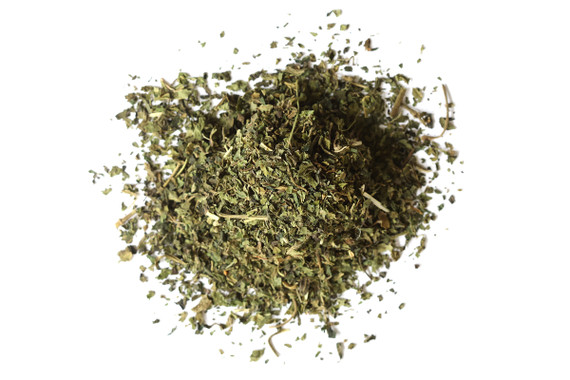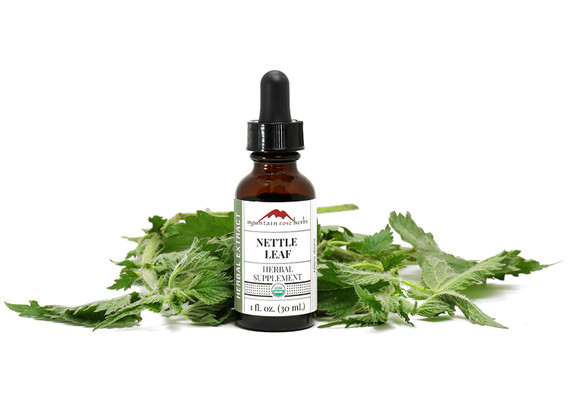Urtica dioica grows best in partially shaded areas with rich, moisture-retentive soil. Nettle can commonly be found in wooded areas, thickets, or near bodies of water. As part of the Urticaceae family, nettle is distinguishable by its many, tiny, stinging hairs that cover the entire plant, as well as its heavily serrated leaves. Nettle leaves are best when collected in the spring and can be used fresh or dried. Cooked nettle leaves are similar to cooked spinach and are considered nutritious greens.
Nettle is a hardy and sprawling herb that can grow up to four feet in height. It flowers tiny, fuzzy white blooms in the spring and summer, and self-seeds in the fall. It is covered with many small hairs that sting upon contact and are used as a defense mechanism to keep animals from eating it.
Nettle is fairly easy to grow and can be planted directly outside in the spring. Seeds should be scattered over prepared soil and kept moist to promote germination. Seedlings will sprout within two weeks and grow rapidly once established, so carefully select growing locations.
This Herb Appears In
• Organic Nettle Leaf
• Organic Nettle Leaf Powder
• Organic North American Nettle Leaf
• Organic Nettle Root
• Organic Nettle Root Powder
• Organic Nettle & Blossoms Tea
• Organic Dawn Chorus Tea
• Nettle Leaf Extract
• Nettle Capsules
• Spring Nettle Care Extact









